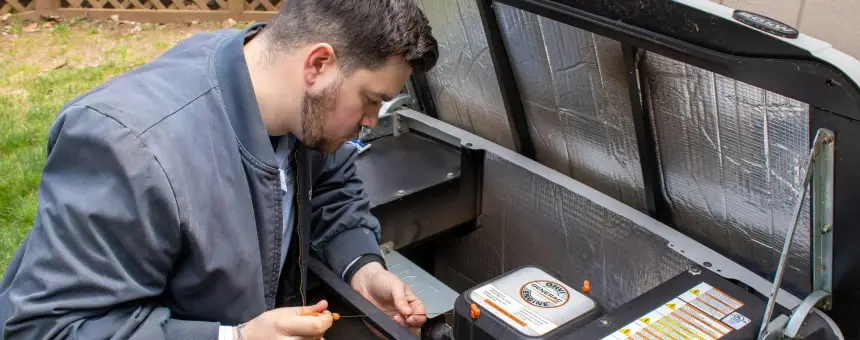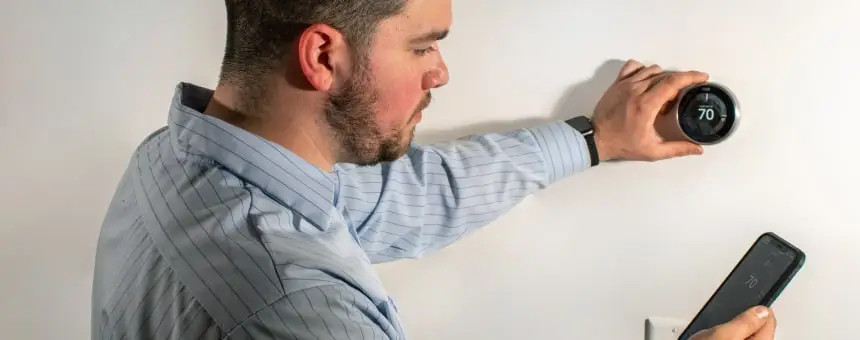Why Go Green in New York
Chances are good you’ve heard quite a bit about “going green” lately. Renewable energy, electric cars, energy-efficient buildings and other green topics are all common themes in day-to-day conversations and in the news. You probably know that going green can help the environment and may have heard that it can save you money, too.
It’s certainly true that living more sustainably can help keep the environment healthy and livable for us as well as the rest of the planet’s inhabitants. But living a greener lifestyle comes with a host of other benefits, too — including some that are unique to New York residents.
People everywhere now see the benefits that living in an eco-friendly way can bring, and more and more of them are looking for ways to get on board with the trend. Green building — the practice of designing and building homes in a way that reduces their negative impacts on the environment — is one especially common and practical action people are taking.
In 2005, just two percent of new single-family residential construction could be considered green building. By 2013, that number had jumped to 23 percent, which represents a $36 billion market opportunity. Analysts expect that, by 2018, 40% of the housing market will be made up of green, single-family homes and 84 percent of construction in the residential sector will include sustainable features.
It’s safe to say that green construction is a trend that isn’t likely to go away any time soon due to the many advantages it offers. If you’re a New York resident, here are some of the benefits you can see by going green.
Saving Money
One of the most talked-about benefits of going green is the potential to save money. Making your home more energy-efficient will help you save on your energy bills and you might also be available for incentives such as rebates and tax reductions for going green.
Homeowners can take lots of different steps to reduce their energy use, ranging from small changes to large-scale projects. Heating and cooling is the area that Americans use the most energy on. Adjusting your thermostat, even by a few degrees, can save you a significant amount of cash. Setting it five degrees lower for eight hours at night in the winter, for example, could result in savings of five to 10 percent on your heating bill. Blocking air leaks and improving insulation can lower heating and cooling costs too.
Conducting a home energy audit can help you determine how efficient your house is and identify ways to save energy.
Savings from simple actions such as unplugging appliances when they’re not in use and replacing incandescent light bulbs with more efficient LED and CFL bulbs add up over time. Unplugging unused appliances, which reduces what’s known as a home’s idle load, could save as much as $165 per year.
Not only will making your home more efficient save you money on your energy bills, but you might also be eligible for rebates and funding assistance programs through federal, state and local governments as well as utilities. New York offers several programs that provide financing for energy-efficient upgrades. Depending on your income, you might qualify for a 50 percent discount, up to $4,000 per project, or for complete funding through the EmPower program. The state also offers incentives for larger projects such as building new homes by offering financial and technical assistance to developers and builders.
Installing solar panels is another way that New York residents are going green and saving on their energy bills. Between 2011 and 2016, solar has grown by an incredible 800 percent in New York State and plays a central role in helping meet the state’s clean energy goal of 50 percent by 2030. The NY-Sun Incentive Program offers financial assistance to reduce the up-front cost of installing solar panels. Residents installing systems up to 200 kilowatts (kW) in size can receive rebates on the cost of the project. Income-eligible participants may be able to receive an even greater discount.
There are plenty of other incentive programs available, too. If you’re installing a ground source heat pump, which uses the relatively stable thermal energy in the ground to heat or cool a building, you could be eligible for up to $1,500 back per ton of cooling capacity. Even something as simple as installing a Wi-Fi enabled thermostat could qualify you for a $25 rebate from New York State Gas and Electric Corporation.
Helping the Environment
Another obvious benefit of going green is that it helps keep the environment healthy by making the air cleaner, preserving natural resources and mitigating the effects of global climate change.
Making our homes more environmentally friendly plays a key role in slowing climate change and keeping the environment healthy. 60 percent of New York State’s greenhouse gas emissions come from heating and cooling buildings, circulating air throughout them and using lighting. Reducing the impact of buildings on the environment could make a huge difference in reducing climate-changing emissions.
Part of the reason why buildings account for such a large percentage of New York’s greenhouse gas emissions is that 80 percent of its structures were built before the use of energy codes in the 1970s. In an effort to help make buildings more efficient and reach emissions reduction goals, New York offers funding for the research and development of improved heating, ventilation and air conditioning systems — more commonly known as HVAC systems.
Making a home more energy-efficient reduces the number of fossil fuels that must be burned to power, heat and cool it. In fact, according to the International Energy Agency, energy efficiency could contribute 38 percent of what we need to stop the planet from warming more than two degrees by 2050.
Green construction also typically use green building materials. These materials are sustainably harvested, meaning they won’t contribute to the depletion of natural resources. They’re also often locally sourced, which means transporting them required burning fewer fossil fuels. Green homes also typically include water-saving fixtures such as low-flow showerheads and sink faucets, which helps conserve natural resources.
According to an analysis by the U.S. Energy Information Administration (EIA), New York ranked ninth among the 50 states for energy-related emissions in 2014. The high population of the state is the biggest factor in this ranking. About six percent of the United States’ population lived in New York in 2014, but the state used only one percent of the nation’s energy and had the lowest per-capita energy consumption.
This is likely because the state’s population is focused in New York City, where public transportation is widely available and most people live in multi-family units, which save energy because the residents share resources. Much of the economy of the state, such as the financial sector, isn’t energy-intensive.
New York has a unique opportunity to lead the charge on energy efficiency. As one of the world’s largest metropolitan centers, people tend to pay attention to what the state does. New York’s energy efficiency policies, initiatives and energy use habits provide the perfect environment for going green.
Health Benefits
Green buildings are beneficial for the health of the environment and can improve the health of residents, too. Their use of natural ventilation and light and sufficient insulation can improve indoor air quality and other factors that impact health.
In indoor environments, pollution levels are generally two to five times higher than in the outdoors because the lack of air circulation keeps the contaminants concentrated. Volatile organic compounds, which come from building materials, furniture, cleaning supplies and other sources, are one common type of indoor air pollutant. Microbial volatile organic compounds like mold and mildew, inorganic gases such as carbon monoxide and semi-volatile organic compounds, which come from fire retardants, can also commonly be found in indoor air.
Because Americans spend on average 90 percent of their time indoors, this poor air quality can have a serious effect on their health.
The natural ventilation used in green homes helps prevent these pollutants from becoming too concentrated and allows residents to breathe cleaner, healthier air. A properly insulated home in which leaks have been identified and eliminated will also keep outdoor pollutants out. This is especially important in larger cities where outdoor air quality is typically poorer.
Green homes also tend to use more natural light to cut down on energy used for operating artificial lighting and to take advantage of the sun’s natural passive heating. Natural light provides vitamin D and can improve mood. According to a study by the American Academy of Sleep Medicine, workers in offices with windows slept for an average of 46 minutes more than those whose offices didn’t have windows, were more physically active and reported a higher quality of life.
Support the Green Economy
Some say the world is going through a green revolution. Others say we need to ramp up the trend toward going green to create a green economy and stop disastrous climate change. Either way, going green has already led to the creation of new jobs, businesses, income and even new industries.
According to the U.S. Bureau of Labor Statistics, greens jobs are either:
- “Jobs in businesses that produce goods or provide services that benefit the environment or conserve natural resources” or
- “Jobs in which workers’ duties involve making their establishment’s production processes more environmentally friendly or use fewer natural resources.”
In 2011, when BLS stopped tracking green jobs, it reported that the U.S. had 3.4 million jobs in Green Goods and Services, which was about 2.6 percent of total employment in the United States. BLS reports that construction is the most common type of green job, making up 38.1 percent of them.
Since then, the green job market has continued to expand thanks in large part to the burgeoning renewable energy industries. The U.S. economy added 3.6 million clean jobs in 2013 and 3.8 million in 2014. New York had the third-most clean job openings of any U.S. state in 2015.
According to a Department of Energy study, 600,000 of the 3.64 million Americans employed in traditional energy work with low-carbon electricity. 1.9 million Americans work, either fully or partly, in energy efficiency. Bruni & Campisi could be counted as a part of this group because of the energy conservation services we offer.
The desire to live more sustainability is creating jobs and economic opportunities. Any time you hire someone to make your home more energy-efficient and greener or build a new green home, you’re supporting a blossoming industry that not only creates jobs, but also benefits the environment.
Keep Up With the Latest Technologies
Technology plays a central role in going green. By getting in on using these technologies early, you can save money, help the environment and get a head start on using the advanced technologies of the future.
Green technology takes advantage of some of the leading tech trends of today. The Internet of Things (IoT), automation and machine learning can all be used to make a home greener and more efficient. The home of the future is a smart home in which every device is connected through a network known as the Internet of Things.
These IoT devices can communicate amongst themselves via the internet. If you left the house without turning the lights off, your lights might automatically shut off when you leave your property with your smartphone in your pocket. A smart thermostat would learn your habits by taking note of things like when you adjust it and when you’re often in a certain room. It could then automatically adjust the temperature to keep it optimal for you while also operating as efficiently as possible.
Energy tech such as solar panels, wind turbines and energy-efficient appliances may also turn out to play a larger role in how we get our energy in the future. Wind and solar made up more than half of the new additions to energy capacity in the U.S. in 2016 and the industries are expected to grow even more in the future. The costs of these resources have been falling as the technology improves, which it is likely to continue doing.
Become More Self-Sufficient
Whether or not you have dreams of “going off the grid,” using sustainable energy can help you become more self-sufficient. If you install your own solar panels, for instance, you generate your own electricity and have to depend less on oil companies, utilities and other groups to keep your home heated, cooled and electrified.
The prices of these fossil fuel resources can fluctuate with market conditions, the productivity of oil and gas businesses and even things like political unrest in the Middle East. When you generate your own energy, you have to worry less about these outside threats and have more certainty about what you’re going to paying each month on your energy bills.
Even if you don’t start generating your own electricity, you can still become less susceptible to changes such as these. If you have a more efficient home, you use less energy — and that means fluctuations in prices or availability of resources will have a less pronounced effect on you.
Getting your heating and lighting naturally from the sun can cut down on energy costs significantly. Homes that use passive solar have large windows positioned so the sun shines into them heating a home and providing natural light. You could also consider using a solar-powered water heater, a geothermal heating systems and even your own small wind turbine if you have the land for it.
As renewable technologies improve, the price of the energy they produce is going down. Generating this electricity on your own means you won’t be as vulnerable to changes in the market and may end up paying less to power your home than if you paid for energy coming from the grid.
Add Value to Your Home
Making your home a greener place to live also adds value to your home, which means you may get more of a return if you ever decide to sell or rent out your house. According to one study, homebuyers are willing to pay an average of 3.64 percent more for green features. That number can jump as high as six or seven percent — especially when solar panels are included.
Adding improvements to your home before it hits the market is a well-known way to get higher bidders. While green upgrades might not be as flashy as aesthetic ones like new granite countertops, they offer some practical benefits that are worth mentioning. If a buyer is aware of how much energy efficiency improvements, renewable energy equipment and other upgrades could save them in the future, they might be more enticed by them. They might also appreciate the fact that living in the home would be friendlier to the environment than other homes on the market would be.
If you want to add value to your home with green additions, installing solar panels is one of the most sure-fire upgrades you can make. The solar market is on the rise and environmentally-conscious homebuyers are looking to get in on the trend. It’s a new enough technology that it’s still exciting, but it’s proven enough that it’s not too risky of an investment.
Smaller investments like adding insulation, blocking leaks, purchasing energy-efficient appliances and installing gadgets like smart thermostats can all make a home much more valuable and saleable.
Creates a Brighter Future
Going green comes with plenty of immediate benefits. It will also benefit future generations for decades to come.
When you make your home greener, you reduce the impact it has on the environment. With the looming problem of climate change, any reduction in emissions will help. Scientists are predicting that the impacts of climate change will be disastrous, and they’ll be much worse for generations of the near future than they are for people who are living right now.
Helping to preserve the environment makes it more likely that our children and grandchildren will have a safe and comfortable world to live in — both because of our immediate reductions in emissions and other impacts and due to the ripple effects those actions can have.
When you invest in making your home more energy-efficient or install solar panels, for example, you’re funding green businesses that help promote green living, home by home, and who might one day come up with an innovation that makes living sustainably easier and even more affordable. The more the market supports green building, the more likely it is to continue to grow and spawn new solutions to environmental issues.
When you make your home more sustainable, other people will take notice. It might inspire them to think about going green and even start some projects of their own. The more people who go green, the more people will want to join them — and the movement will grow exponentially. And if we want to help save the planet, we’ll need contributions from lots of different people.
Contact Bruni & Campisi for Green HVAC Systems
If you’re thinking about going green, your HVAC system is a perfect place to start, because 60 percent of New York’s greenhouse gas emissions come from heating, cooling, air circulation, and lighting. The fact that you already know about the energy-efficient HVAC experts at Bruni & Campisi is another great reason.
If you want to know more about going green with your HVAC system in Westchester, Greenwich or Stamford counties, contact us to learn more and request a free estimate today.



MEMBERSHIPS
Bruni & Campisi offers a complete maintenance program for all your needs.
VIEW MEMBERSHIPS

